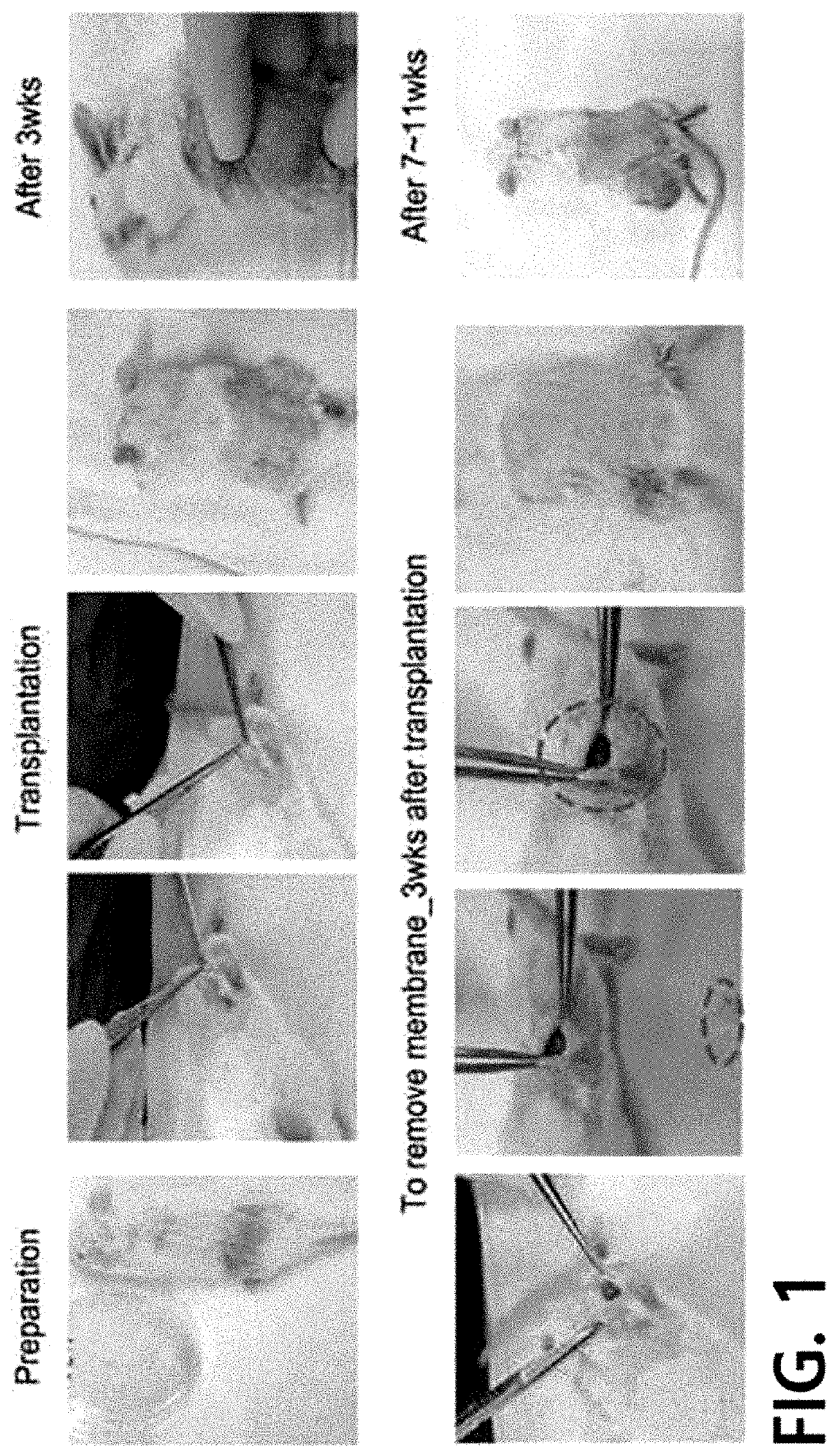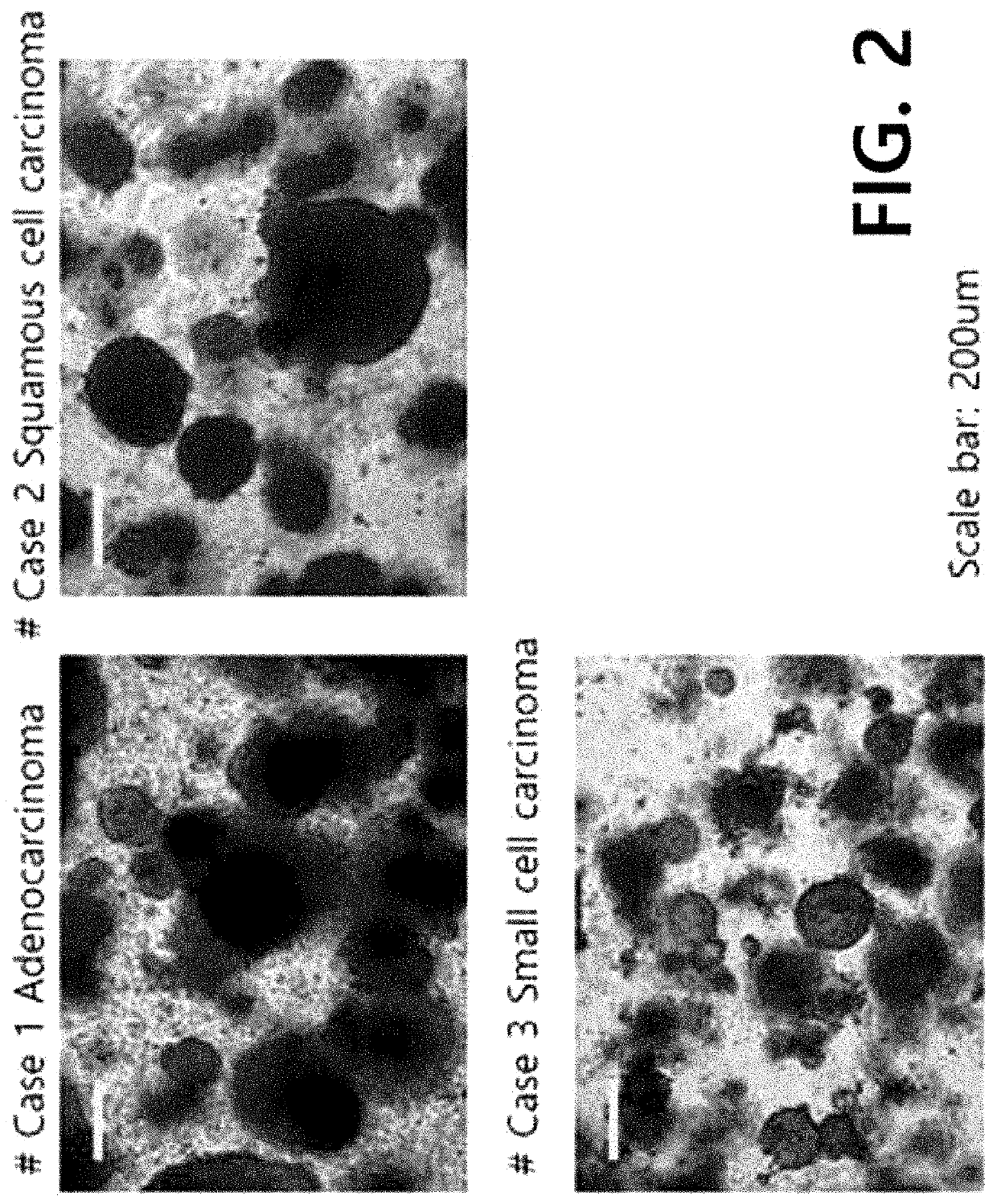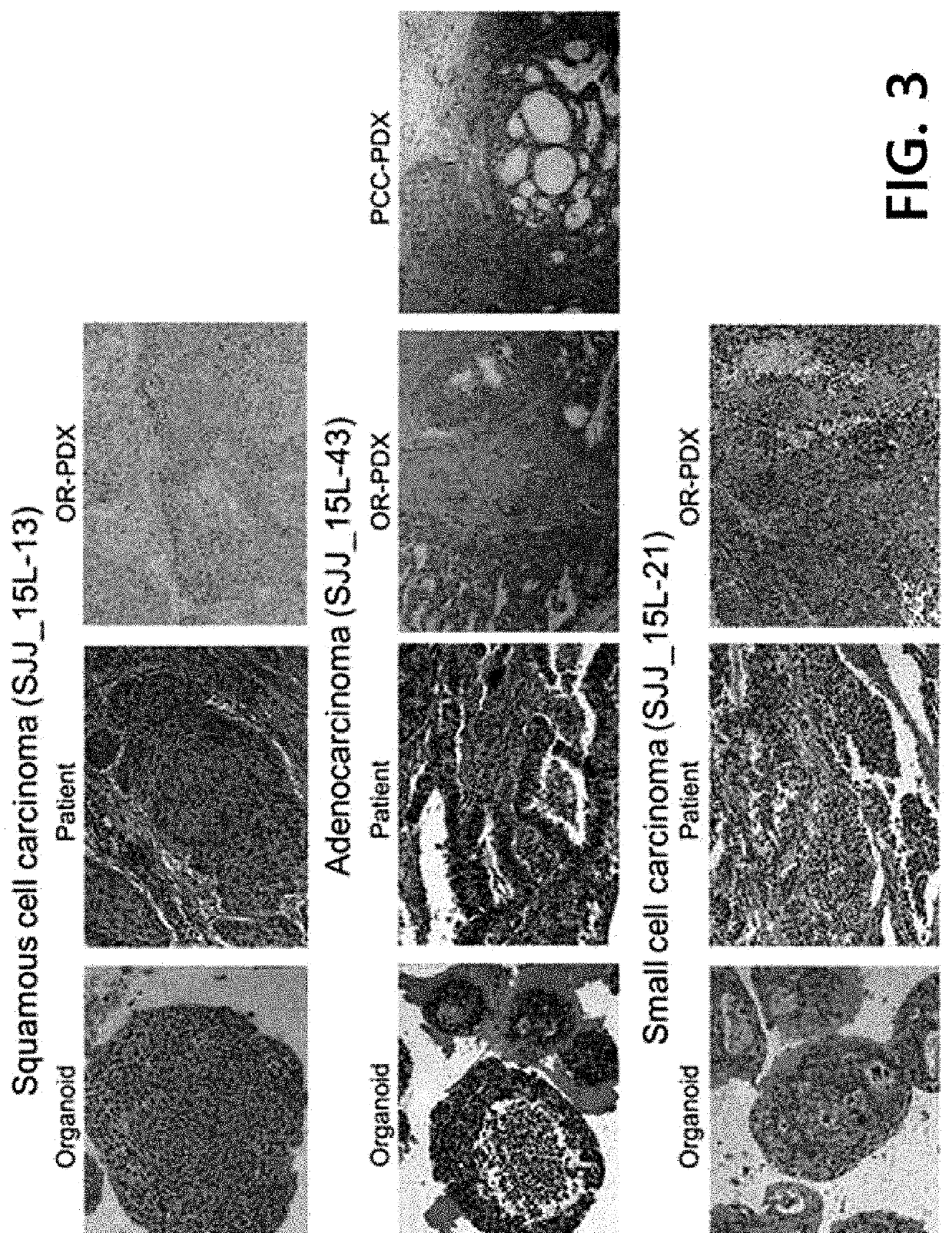Method for culturing 3-dimensional lung cancer organoid and method for preparing patient-derived xenograft animal model using same
a lung cancer and organoid technology, applied in the field of 3d lung cancer organoid culturing and patient-derived xenograft animal model preparation, can solve the problems of low success rate of cancer cells being constructed from cancer tissue, model cannot represent patient's original characteristics, and disappearance of properties
- Summary
- Abstract
- Description
- Claims
- Application Information
AI Technical Summary
Benefits of technology
Problems solved by technology
Method used
Image
Examples
preparation example
[0068]Experiments were conducted under approval from the Institutional Review Board (IRB) and the Animal Care Committee (ACC) of Asan Medical Center (Seoul, South Korea). Human lung cancer samples were obtained from tissues excised during surgery for 7 lung cancer patients.
example 1.3
Example 1. 3-Dimensional Culture of Patient-Derived Lung Cancer Cells
[0069]1-1) Cellization of Patient-Derived Lung Cancer Tissue
[0070]The samples in the Preparation Example were cellized according to a known protocol. Specifically, each of the samples in the Preparation Example was placed on a petri dish, and trimming was done using a surgical knife to provide only a cancer tissue portion. The cancer tissue was cut to 1 to 2 mm, transferred to a 15-ml conical tube, and pipetted vigorously 3 to 4 times with a washing solution (DMEM media+0.1% BSA). The resultant was left to stand for 1 minute so that the tissue precipitates due to gravity, and then the supernatant was removed. The above washing step was repeated 3 to 4 times until the tissue becomes clean.
[0071]Then, the same amount of digestion solution as the tissue was added thereto and reaction was allowed to proceed for 40 to 60 minutes in a 37° C. rotary incubator. After 20 minutes, a microscope (40 to 100 magnification) was u...
example 2
n of Organoid and Enzymatic Dissociation
[0077]2-1) Separation of Organoid
[0078]The medium for lung cancer organoid used for the culture in Example 1-2) was placed in a water bath and warmed up. Then, the medium in each well of the 6-well plate was removed. Subsequently, 500 μl of cold PBS was placed in each well, and the organoid-containing Matrigel was removed from the plate. Subsequently, the Matrigel / PBS mixture was transferred to a 15-ml conical tube, and the organoid was separated.
[0079]2-2) Enzymatic Dissociation
[0080]The organoid separated in Example 2-1) was centrifuged with 250×g for 3 minutes at 4° C., and then the supernatant was removed. The resultant was resuspended with PBS, and then centrifugation was performed again with 250×g for 10 minutes at 4° C. to separate the organoid from the Matrigel layer. The supernatant and the Matrigel were removed. Then, 1,000 to 2,000 μl of Trypsin / EDTA was placed in 3 wells of a 6-well plate, and reaction was allowed to proceed for 10...
PUM
| Property | Measurement | Unit |
|---|---|---|
| composition | aaaaa | aaaaa |
| biocompatible | aaaaa | aaaaa |
| heterogeneity | aaaaa | aaaaa |
Abstract
Description
Claims
Application Information
 Login to View More
Login to View More - R&D
- Intellectual Property
- Life Sciences
- Materials
- Tech Scout
- Unparalleled Data Quality
- Higher Quality Content
- 60% Fewer Hallucinations
Browse by: Latest US Patents, China's latest patents, Technical Efficacy Thesaurus, Application Domain, Technology Topic, Popular Technical Reports.
© 2025 PatSnap. All rights reserved.Legal|Privacy policy|Modern Slavery Act Transparency Statement|Sitemap|About US| Contact US: help@patsnap.com



